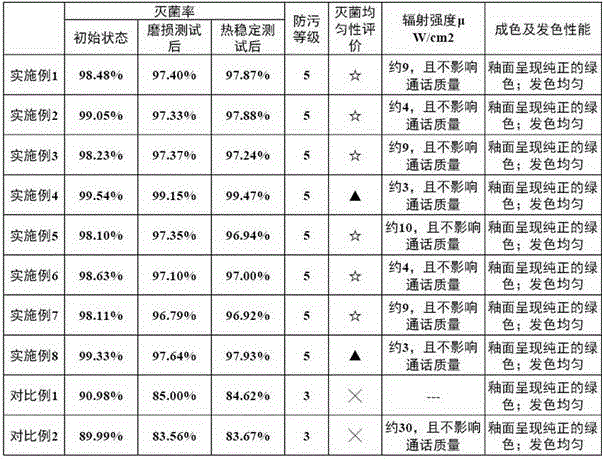Anti-radiation low-temperature antique glaze and preparing method thereof
A radiation-proof and low-temperature technology, applied in the field of ceramics, can solve the problem of less antique ceramics
- Summary
- Abstract
- Description
- Claims
- Application Information
AI Technical Summary
Problems solved by technology
Method used
Image
Examples
Embodiment 1
[0034] A radiation-proof low-temperature antique glaze and a preparation method thereof, the preparation method comprising the following steps:
[0035] Step A, preparation of radiation-proof low-temperature frit: mix 10% quartz, 10% feldspar, 16% borax, 12% carbonate, 35% boric acid, 3% spodumene, 4% fluoride salt, and 1.5% kaolin Grind evenly; then add 0.5% antibacterial compound and 8% anti-radiation compound, and grind evenly to obtain a mixture; spread the mixture into a refractory sagger, and perform high-temperature melting at 1250~1320°C to obtain molten Slurry; the slurry is quenched and cooled by water, and broken into granules to obtain radiation-proof low-temperature frit; wherein, the feldspar is obtained by mixing potassium feldspar and albite feldspar at a weight ratio of 4:1; the carbon The acid salt is obtained by mixing potassium carbonate, sodium carbonate, barium carbonate, lithium carbonate and calcium carbonate in a weight ratio of 3:1:3:2:1; the fluoride...
Embodiment 2
[0048] A radiation-proof low-temperature antique glaze and a preparation method thereof, the preparation method comprising the following steps:
[0049] Step A, prepare low-temperature frit for radiation protection: mix 15% quartz, 8% feldspar, 25% borax, 8% carbonate, 27% boric acid, 5% spodumene, 3% fluoride salt, and 3% kaolin Grind evenly; then add 1% antibacterial compound and 5% anti-radiation compound, and grind evenly to obtain a mixture; spread the mixture into a refractory sagger, and perform high-temperature melting at 1250~1320°C to obtain molten Slurry; the slurry is quenched and cooled by water, and broken into granules to obtain radiation-proof low-temperature frit; wherein, the feldspar is obtained by mixing potassium feldspar and albite feldspar at a weight ratio of 4:1; the carbon The acid salt is obtained by mixing potassium carbonate, sodium carbonate, barium carbonate, lithium carbonate and calcium carbonate in a weight ratio of 3:1:3:2:1; the fluoride sal...
Embodiment 3
[0062] A radiation-proof low-temperature antique glaze and a preparation method thereof, the preparation method comprising the following steps:
[0063] Step A, prepare low-temperature frit for radiation protection: mix 18% quartz, 12% feldspar, 21% borax, 5% carbonate, 25% boric acid, 8% spodumene, 1% fluoride salt, and 5% kaolin Grind evenly; then add 2% antibacterial compound and 3% anti-radiation compound, and grind evenly to obtain a mixture; spread the mixture into a refractory sagger, and perform high-temperature melting at 1250~1320°C to obtain molten Slurry; the slurry is quenched and cooled by water, and broken into granules to obtain radiation-proof low-temperature frit; wherein, the feldspar is obtained by mixing potassium feldspar and albite feldspar at a weight ratio of 4:1; the carbon The acid salt is obtained by mixing potassium carbonate, sodium carbonate, barium carbonate, lithium carbonate and calcium carbonate in a weight ratio of 3:1:3:2:1; the fluoride sa...
PUM
 Login to View More
Login to View More Abstract
Description
Claims
Application Information
 Login to View More
Login to View More - R&D
- Intellectual Property
- Life Sciences
- Materials
- Tech Scout
- Unparalleled Data Quality
- Higher Quality Content
- 60% Fewer Hallucinations
Browse by: Latest US Patents, China's latest patents, Technical Efficacy Thesaurus, Application Domain, Technology Topic, Popular Technical Reports.
© 2025 PatSnap. All rights reserved.Legal|Privacy policy|Modern Slavery Act Transparency Statement|Sitemap|About US| Contact US: help@patsnap.com

